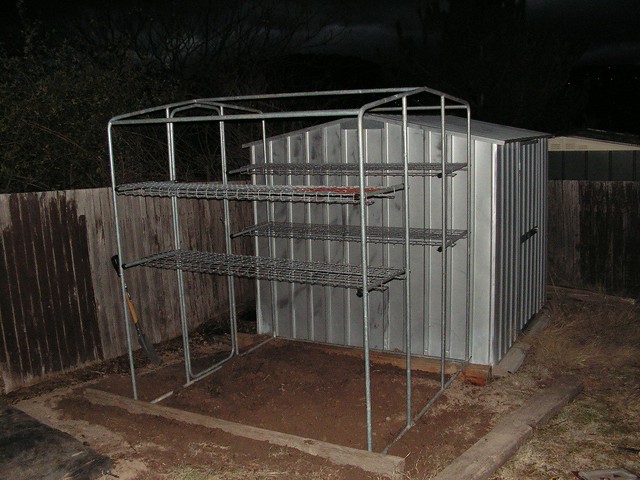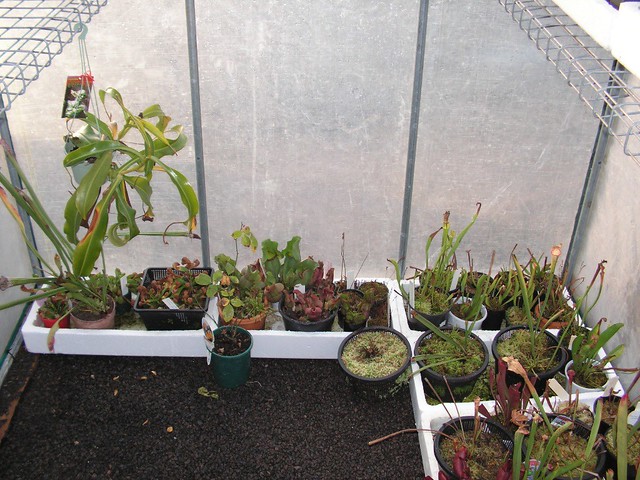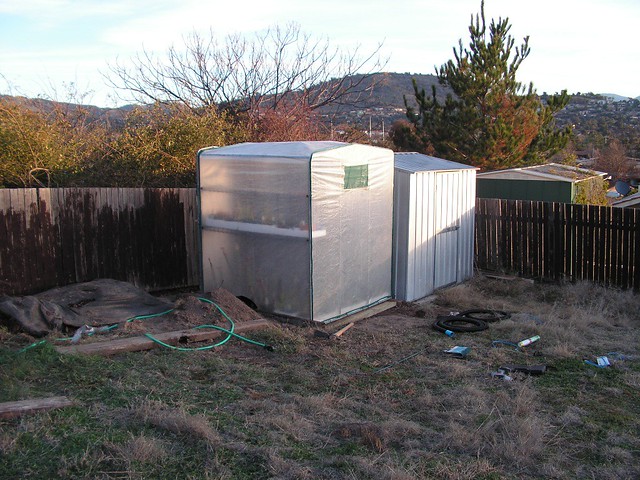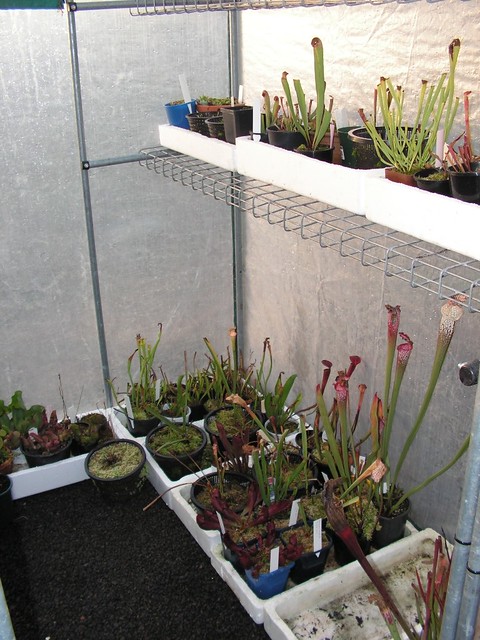
When I got back into carnivorous plants after growing them as a kid, I was relying on my experience growing them in southern Queensland, where the climate is a lot gentler than here in Canberra. This meant I underestimated just how tough plants like Sarracenia actually are. So, when we brought our first house, I was hell-bent on buying a greenhouse to grow my plants in – I wanted them to be the best and thought a greenhouse was grow better plants – it worked for people in the UK after all. In retrospect, this was a very foolish thing to do – I should have trialled them outside for a year and then made a decision based on how they grew. But when you are young you make lots of mistakes and learn from the experience – as I did with greenhouses.
I quickly brought a greenhouse from Bunnings that was utter garbage – a powder coated frame held together with plastic fittings and a non-UV stable canopy. Needless to say, it did not last six months. A colleague at work (who very sadly died in 2012) then offered me a galvanised frame hothouse with a UV stabilised – but old – solarweave cover. I soon brought it and spent a weekend installing it. It took two days solo effort and boy was I proud with the result. It was rough and ready and amateurish but still my first solo landscaping effort. The pic above is the product after the cover was on and the plants in – we later had a beautiful native plant garden along the fence at the back and a beautiful rose garden plus two veggie patches at this house.
As you can see, my collection was a lot smaller than what it is now – a handful of Sarracenia flava and leucophylla with a few purpurea for measure. This was also in the bad old days when you could buy live Sphagnum from Tasmania (harvested from land about to be clear-felled for timber). I had intended to use 20 cm mesh baskets used for growing waterlillies willed with Sphagnum. Trouble was, it was expensive – the two bags of sphag needed to fill one basket cost $15 on its own! So I went to 1:1:1 peat:sand:perlite and a year after these photos were taken, and eventually 1:1 peat:sand.

The solarweave skin of this house was totally useless for insulation – it admitted light (maybe 60% shade equivalent due to its age) but bled heat, so it would freeze inside very fast. It was basically good only for keeping the wind off the plants, which was a good thing given the howling westerlies that were either hot and dry or freezing cold depending on season. The siting of the greenhouse was also poor – I put it north-east of the garden shed which meant the shed blocked the sun after 3 PM. This meant plants on the wall backing the shed got etiolated (the plants on the north wall blocked too much light). The Nepenthes is N. ‘goblin’ brought at the 2008 ICPS in Sydney. Surprisingly, it actually survived the winter (minimums to –8*C!). I took pity on it and gave it to a friend who had a heated greenhouse of identical construction (he pays something like $2000 a year in electricity accordingly!). His heater died last year on another –8*C night and the poor goblin got through being tortured again – it burned back to its roots and regrew!
A year or so later, I moved this greenhouse uphill by 3 meters so it got more sun, and it went on to do me very well for Sarracenia from 2009 to 2012 when we moved house. It went on to grow every species and subspecies of Sarracenia named at the time plus Darlingtonia. By 2011, I had too many divisions and had to put the excess outside – only for them to do as well as or better than the plants inside! This proved that the greenhouse – great thought it was – was totally unnecessary. I loved spending time inside it – it was my own private getaway after all – but it still proved to be a waste of money at a time when it could have been better spent. Had I instead brought a couple of bathtubs for $20 each from the recycling yard and a couple of bags of peat and sand, I could have made two bog gardens for much less than half the money I spent on the greenhouse. I ultimately sold this greenhouse for half what I brought it for to another colleague and I moved to bog gardening. But it brings back a flood of memories – both good and bad – looking at these photos.
But we all have to start somewhere…

